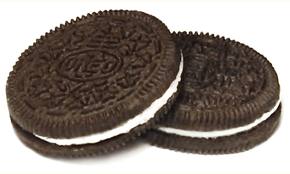What the Super Bowl taught us about darkness
By Jerry Rackley
Super Bowl XLVII may be most remembered for 34 minutes of darkness. Being a rather opportunistic marketer, as the blackout wore on, I remember thinking to myself, “this is a perfect setup for a Duracell commercial”, as if a company were agile enough to get inspired, produce and air a spot within 34 minutes. Duracell may have missed their chance, but Oreo did not. One of the most talked about Super Bowl ads, anointed by many as “the winner” was the Oreo blackout tweet.
 If you missed it, Oreo tweeted a spotlighted Oreo cookie in darkness with the caption, “you can still dunk in the dark.” It tweeted this to its followers, who responded by re-tweeting it more than 15,000 times in the first 14 hours. Let’s look at what we can learn from this case study:
If you missed it, Oreo tweeted a spotlighted Oreo cookie in darkness with the caption, “you can still dunk in the dark.” It tweeted this to its followers, who responded by re-tweeting it more than 15,000 times in the first 14 hours. Let’s look at what we can learn from this case study:
- Timing is everything. One of the reasons this ad worked was the timing. The blackout event triggered it, and during the blackout, millions of people were using the time to refill snacks, take a bio break, and check out Twitter. If this tweet had gone out even a little later, it would not have worked.
- Old brands still have new things to say. Oreo is a 100-year old brand, and we tend not to expect avant-garde messaging and advertising from brands so long of tooth. But as this tweet shows us, we admire and respect brands that don’t always travel straight down the middle of the conservative advertising path.
- Despite the improvisation, a lot of preparation went into the ad. It’s true that the ad was a brilliant inspiration, but it didn’t just happen. Oreo had a creative team on standby during the Super Bowl. Furthermore, Oreo had built a social media presence that included over 70,000 Twitter followers. When the blackout provided the creative spark, the Oreo team was ready.
- Expect the unexpected. Who could have predicted the Super Bowl blackout, yet alone prepared advertising materials for it? No one. Yet, there is a posture of readiness that enabled Oreo to exploit the situation. Whenever you put your brand on a big stage, you always want to have the talent on hand to cope with any conceivable incident. Oreo didn’t anticipate the blackout, but they had the resources available to cope with emergencies and opportunities.
- It helps to be clever. Part of the reason the ad worked so well is because it was clever. We admire and respect that. Oreo could have tweeted “While you’re waiting for the Superdome lights to come back on, how about having an Oreo?” What they did tweet was fun, a little subtle and clever, and we responded.
- Pictures are still worth a thousand words. With inflation, a picture may now be worth closer to 1,800 words. The right graphics do so much to enhance a message. Our brains process images faster than text. The Oreo tweet without the picture would have still been cute, but not as attention grabbing.
- Social media is an advertising medium. Okay, so this isn’t new information, and of course social media isn’t only an advertising medium. But sometimes it is. It’s not a best practice to only blast advertising messages to followers – they’re usually looking for something more, like entertainment, practical information or other value. As Oreo has shown us, you can slide a clever promotional message in and garner praise for it. When used properly, social media is a very effective advertising channel.
- Sometimes you just have to take a chance. Most brands as big and valuable as Oreo do not care to take creative risks. Anything that could even remotely threaten to tarnish the brand is vehemently rejected. Always playing it safe creatively isn’t memorable and doesn’t produce outcomes like Oreo got from its Super Bowl blackout tweet. If you want the reward, sometimes you have to take the risk.
Oreo was not the only advertiser to exploit the blackout. Audi jabbed at Mercedes Benz in a blackout tweet. Tide and VW also sent out blackout-related tweets. The clear winner, however, was Oreo. Let’s learn from their example and realize that being in the dark isn’t always a bad thing.
Shed some light on your social media efforts with the Demand Metric Social Media Marketing Plan Methodology.


